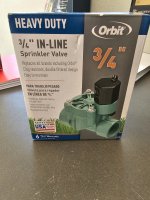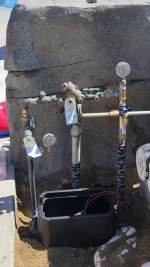Good info - in my case though being county of San diego, that's really all it does.
I have an existing 2" rpz immediately following the water meter that we were required to install when we built the house to protect the city supply. In 2020 when we added irrigation I was required to place a 1" rpz after the line split off the house supply before the irrigation valves. Then in 2021 when we added the pool another 3/4" rpz was required for the pool (I had an easy way to tee off after the 1" irrigation rpz thinking it would save money but the county said that was also not allowed.
Yah, that sounds like city lawyers got involved. It's a combo of common sense, science and litigation results that drives building codes.
Mine used to be on a branch split off underground before the house, on the city side of my house's pressure reducer. The auto-fill line was taken off the irrigation plumbing, like you wanted to do. So a backflow event from the street wouldn't have sucked pool water into the house, but rather drained both the house and the pool together. And since the pool is below the house, the water wouldn't have traveled "up." The pool builder did put a cheap check valve on the auto-fill line, and that must have passed inspection (before I owned the property).
My city doesn't require an RPZ between property and street, so we don't even have
that protection. So, yah, every city is going to have different requirements, and the OP probably needs to investigate and meet those, if for no other reason than to stay compliant.
Then I really messed things up by rerouting my auto-fill supply to my indoor circuit, to fill the pool with soft water. That's when I installed the BFP, just in case. Later, I re-did my irrigation, so installed one there, too. But there's still nothing between my house and the street!
My city-water-company-employee buddy, who taught me all this stuff, thinks eventually, here in CA anyway, BFP will be required everywhere. Currently it's required on all businesses, just not residences. He figures they'll start with new construction, and then maybe someday require retrofits for everyone. Typical indoor fixtures have built-in BFP, as I mentioned, so that's probably why this has never been addressed, nation-wide. But that doesn't account for numbskulls like me that modify their own plumbing. Or pool builders or landscapers that take shortcuts that never get inspected.
So while all that BFP is a pain for folks like you in forward-thinking cities like yours, it really should have been mandatory ions ago, everywhere. Ultimately, you and your family and your neighbors are safer, and while shelling out for that was no fun, you can feel good about contributing.




